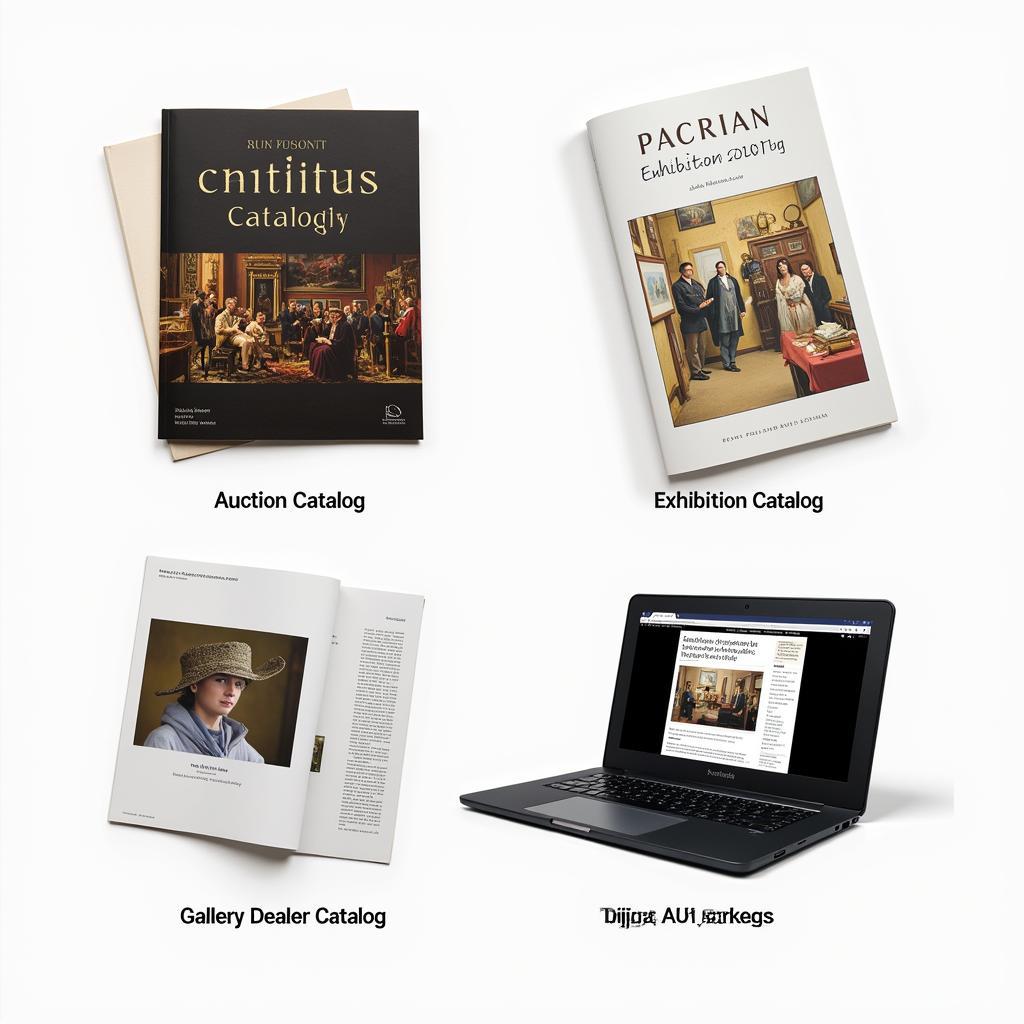Exploring the World of Art Catalogs
Art Catalogs are more than just lists of artwork; they’re portals into the creative process, historical records, and valuable resources for collectors, researchers, and art enthusiasts. They provide a tangible connection to the art world, allowing us to delve deeper into exhibitions, artists, and specific art movements. Whether you’re a seasoned collector or simply curious about art, understanding the nuances of art catalogs can enrich your appreciation and knowledge.
As a digital artist, I’m fascinated by how technology is transforming the way we experience and interact with art catalogs. From interactive online platforms to augmented reality experiences, the possibilities are endless. Imagine exploring a contemporary art museum shop virtually and browsing their digital catalog, complete with 3D models of the artwork!
The Importance of Art Catalogs in the Digital Age
Despite the rise of digital media, the importance of art catalogs remains undiminished. They offer a curated and in-depth perspective on artwork, often including essays, interviews, and detailed descriptions that go beyond a simple image. They’re essential tools for researchers studying specific artists or periods, providing valuable context and documentation. Collectors rely on them to authenticate pieces, track provenance, and understand the market value of artwork.
Why are Art Catalogs Still Relevant?
Art catalogs offer a level of detail and scholarship that’s often missing in online databases. They provide a curated narrative, guiding the viewer through a specific collection or exhibition. Think of them as curated journeys through the art world. They’re not just about showcasing the art itself; they’re about telling a story. What’s more, high-quality printed catalogs can be beautiful objects in their own right, adding to the tactile experience of appreciating art.
 Art Catalog in the Digital Age
Art Catalog in the Digital Age
Different Types of Art Catalogs
From auction catalogs brimming with upcoming masterpieces to museum catalogs documenting permanent collections, the world of art catalogs is diverse. Each type serves a unique purpose and caters to a specific audience. Exhibition catalogs, for example, provide a snapshot of a particular show, often including essays by curators and critics. These catalogs can be valuable resources for understanding the themes and concepts behind an exhibition.
Navigating the Variety of Catalogs
Understanding the different types of catalogs can be crucial for effectively researching art. Auction catalogs, for instance, are designed to entice bidders and often include estimates and provenance information. Dealer catalogs, on the other hand, showcase the inventory of a specific gallery, providing insights into their specialization and market focus.
 Variety of Art Catalogs
Variety of Art Catalogs
Looking for unique art pieces to add to your collection? You might be interested in exploring resources like huguette clark art for sale.
The Future of Art Catalogs: Embracing Digital Innovation
The digital revolution is transforming the art world, and art catalogs are no exception. We’re seeing a rise in interactive online catalogs, virtual exhibitions, and augmented reality experiences that enhance engagement and accessibility. These digital platforms offer the potential to reach a wider audience and provide dynamic, immersive ways to explore art.
How is Technology Changing Art Catalogs?
Imagine being able to zoom in on a painting to examine the brushstrokes in detail, or hear the artist discuss their inspiration through an embedded audio clip. Digital catalogs offer these possibilities and more. They can incorporate multimedia elements, interactive features, and personalized recommendations, creating a richer and more engaging experience for the viewer. For those who appreciate vintage aesthetics, platforms like vintage swimsuit wall art can bridge the gap between traditional and digital art experiences.
 Future of Art Catalogs: Digital Innovation
Future of Art Catalogs: Digital Innovation
Conclusion
Art catalogs are invaluable resources for anyone interested in art, providing context, documentation, and deeper insights into the creative process. From traditional printed catalogs to innovative digital platforms, they continue to evolve and adapt to the changing landscape of the art world. Embracing these resources will undoubtedly enrich your understanding and appreciation of art.
FAQ
-
What is the purpose of an art catalog?
Art catalogs document and provide context for artwork, serving as resources for collectors, researchers, and enthusiasts. -
Where can I find art catalogs?
Art catalogs can be found in museums, galleries, auction houses, and online platforms. -
Are art catalogs expensive?
The price of art catalogs varies depending on the publisher, content, and rarity. -
How do I use an art catalog?
Art catalogs can be used to research artists, identify artworks, understand art history, and track provenance. -
What is the difference between an exhibition catalog and an auction catalog?
An exhibition catalog documents a specific art show, while an auction catalog lists artworks for sale at an auction. -
Are digital art catalogs replacing printed catalogs?
Digital catalogs offer new possibilities for engagement, but printed catalogs still hold value for their tactile experience and collectability. -
What information can I find in an art catalog?
Art catalogs often include images of artworks, artist biographies, essays, descriptions, and provenance information.
Need more space for your growing art collection? Check out the art supply storage cabinet for a practical and stylish solution. You can also delve deeper into the world of Indian art with resources like the vidya dehejia indian art pdf.
For further information on specific artists or art movements, explore other articles on our website. We also have a comprehensive guide on building your art collection.
When you need assistance, please contact us at Phone Number: 02462573573, Email: danteum@gmail.com or visit us at Savico Megamall, 7-9 Đ. Nguyễn Văn Linh, Gia Thụy, Long Biên, Hà Nội 10000, Việt Nam. We have a 24/7 customer service team.




